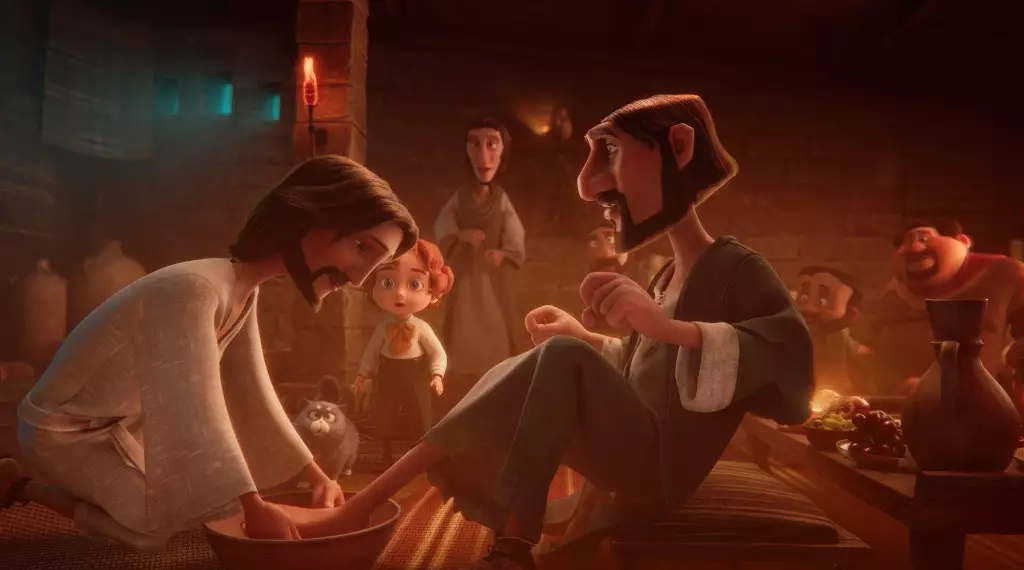In an age where mainstream cinema often prioritizes big-budget blockbusters and trend-driven narratives, the emergence of faith-based films in the top tiers of the box office stands as a striking anomaly. With three faith-inspired movies capturing headlines, including “The King of Kings” by Angel Studios, which is poised to rake in a staggering $19 million over its opening weekend, one can’t help but ponder the cultural significance of this seismic shift. It’s not just about box office numbers; it indicates a profound yearning for stories that resonate deeply with audiences’ values and beliefs. As the film industry pivots to cater to diverse audiences, these faith-centric films challenge the status quo, pointing to a renewed interest in spirituality, morality, and humanity in storytelling.
Setting Records and Unpacking Audience Psyche
Notably, “The King of Kings,” which chronicles the life of Jesus through a Dickensian lens, is arguably a watershed moment in the genre of animated faith-based films. It has not only eclipsed the previous animated film record set by “The Prince of Egypt” but also garners an A+ CinemaScore and a revered 97% fresh rating from audiences on Rotten Tomatoes. This phenomenon raises questions: Why now? The answer may lie in the collective psychological state of individuals amid a tumultuous global landscape. With economic uncertainties, social upheaval, and existential crises permeating the modern world, audiences are gravitating toward narratives that offer comfort, moral clarity, and a sense of belonging.
Brandon Purdie, the Global Head of Theatrical Distribution at Angel Studios, aptly posited that understanding one’s audience and listening to their desires is paramount. This observation underscores an empowering narrative: films that resonate on a fundamental emotional level possess the potential not only to entertain but also to uplift communities. The Angel Guild, consisting of approximately one million members who have a direct say in content creation, turns traditional marketing wisdom upside down. In an era overshadowed by mega-studios, this audience-centric approach showcases how the collective voice can challenge industry norms.
The Landscape of Independent Film
Independent cinema has also seen a surge, with traditional indies flexing their muscles at a recovering box office. Compelling titles such as “The Ballad of Wallis Island,” feature whimsical tales and eccentric characters, providing a refreshing counterpoint to mainstream offerings. However, it’s essential to note that while these indie films strive for artistic expression, they often grapple with limited budgets that risk undermining their narratives. The dynamic between financial backing and creative freedom is a persistent hurdle. Nonetheless, the profound stories found in these independent films reflect a quarter of an audience that appreciates nuanced storytelling over special effects.
Amid these shifting sands, the staggering performance of Indian films like “Good Bad Ugly” and “Jaat” compels reflection on the globalization of cinema. These pieces broke through the noise, indicating a growing appetite for narratives that speak to diverse backgrounds and cultures. It’s increasingly evident that audiences are eager for authenticity and relatability, irrespective of genre. The cultural tapestry of film is wider and richer than ever, showcasing tales from the global village that resonate with universal themes of love, fear, hope, and redemption.
Why Box Office Resilience Matters
The box office resilience displayed by faith-based and independent films is a boon for the industry. It’s not merely about financial gains; it’s a testament to the evolving complex relationship between art and society. In a world inundated with sensationalism, the quiet yet powerful messages within these films encourage discussions about belief systems, ethical dilemmas, and personal journeys. For many, cinema is more than just entertainment—it’s a space for reflection and communal connection.
The burgeoning success of films like “The Chosen” franchise further illustrates that there is a marked demand for narratives that encourage family-friendly entertainment paired with moral undertones. It’s a clarion call for filmmakers and studios alike to innovate within the industry while remaining attuned to audience aspirations. The dynamic interplay of creative vision, audience response, and distribution models delineates a promising trajectory for faith-based films and independent cinema alike.
Rethinking the Future of Film
The intertwining narratives of faith-based films and independent projects frame an intriguing future for cinema. The success of these genres compels us to evaluate our predetermined notions about film and storytelling. As the bastions of traditional filmmaking confront new dynamics, it might open doors to voices previously marginalized in Hollywood. It’s an invitation for a clean slate, ushering in a paradigm shift that prioritizes authenticity, diversity, and, most importantly, the cultural narratives that reflect our myriad experiences.
In this evolving landscape, the heartwarming success of faith-based and independent films invites all industry stakeholders—creatives, distributors, and investors alike—to heed audiences’ voices. As films like “The King of Kings” teach us, it’s not just about the visual spectacle; it’s also about understanding the deeper narrative that unites us in our shared humanity.

